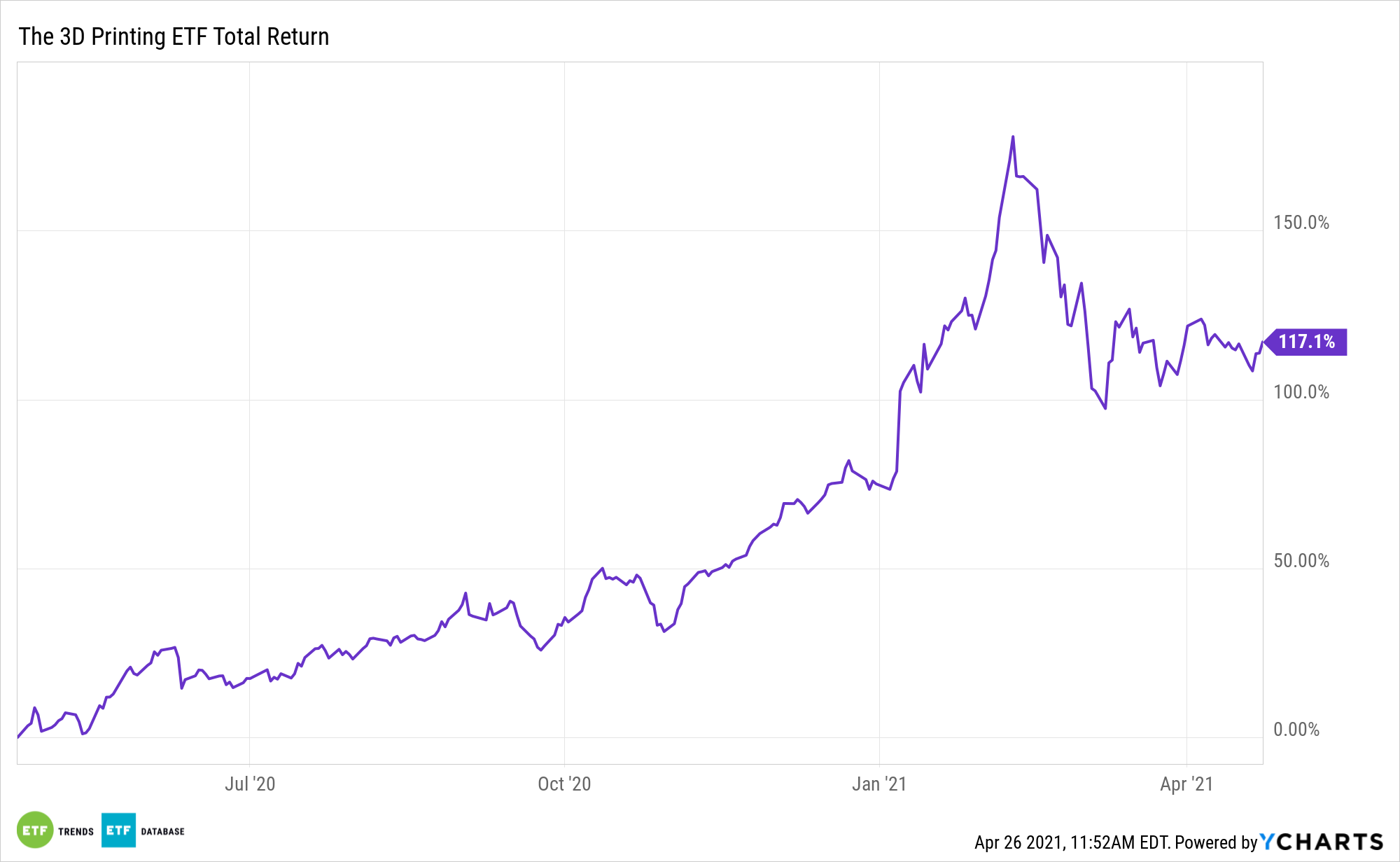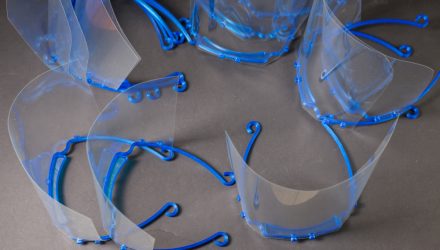The ARK 3D Printing ETF (CBOE: PRNT) is higher by 24% year-to-date and has more than doubled in value over the past year, confirming that 3D printing stocks are roaring back to life.
However, some investors still remember the 2013 bust in 3D printing stocks, prompting thoughts about whether or not this time will be different. Back then, 3D printing equities were seen as one of the original disruptive technologies – a trait that holds true today. But hype permeated the market and the related stocks fell almost as rapidly as they surged.
Some investors are wagering that the coronavirus pandemic will lift PRNT and its components again this year.
“Fans are betting that the pandemic has forced companies to reconsider how they manufacture goods longer term, with some looking more toward onshore production to prevent supply issues and shortages,” reports Laura Forman for the Wall Street Journal.

More on Ark’s ‘PRNT’
PRNT is the first U.S.-listed ETF dedicated to the 3D printing theme. The fund is one of two passively managed products from New York-based Ark Investment Management. ARK believes 3D printing will revolutionize manufacturing by collapsing the time between design and production, reducing costs, and enabling greater design complexity, accuracy, and customization than traditional manufacturing.
PRNT’s roster “is composed of equity securities and depositary receipts of exchange-listed companies from the U.S., non-U.S. developed markets and Taiwan that are engaged in 3D printing-related businesses within the following business lines: (i) 3D printing hardware, (ii) computer-aided design (‘CAD’) and 3D printing simulation software, (iii) 3D printing centers, (iv) scanning and measurement, and (v) 3D printing materials,” according to Ark.
Declining costs plays an integral role in 3D printing adoption, as well as the underlying investment thesis. The same goes for the wide variety of sector-level applications for the technology, including both healthcare and industrials.
“There are fundamental factors at play, too. 3-D printing companies saw renewed interest amid the pandemic from healthcare companies looking for help in producing medical supplies. The technology was able to help create nasal swabs, critical-care ventilators and face masks to bridge the gaps caused by supply shortages and delays from traditional manufacturers,” adds the Journal.
For more on disruptive technologies, visit our Disruptive Technology Channel.
The opinions and forecasts expressed herein are solely those of Tom Lydon, and may not actually come to pass. Information on this site should not be used or construed as an offer to sell, a solicitation of an offer to buy, or a recommendation for any product.

